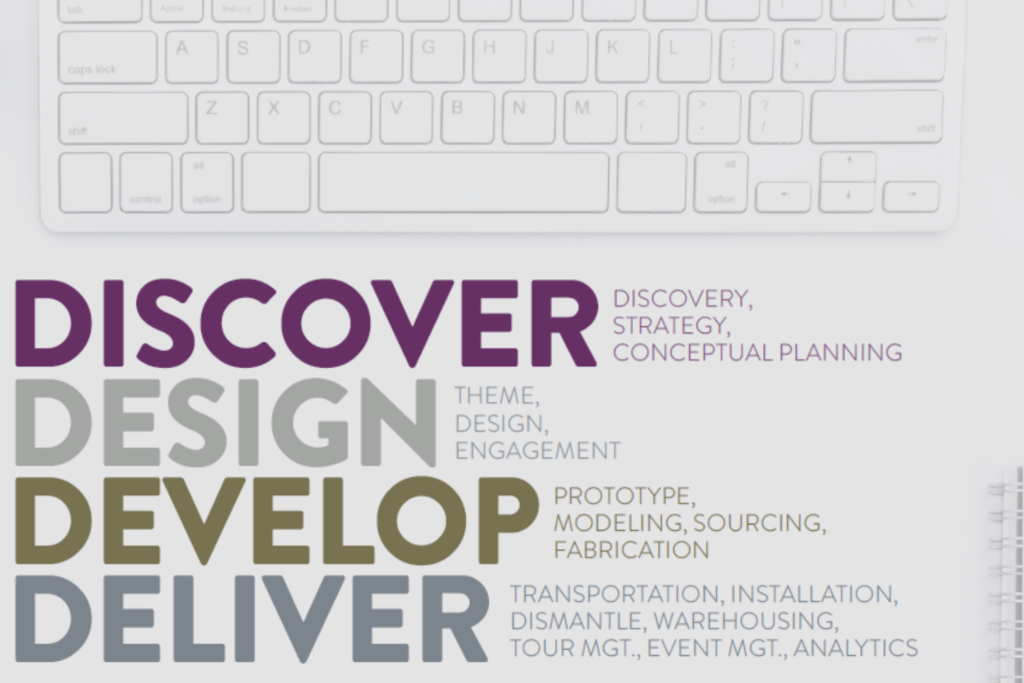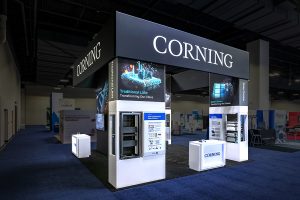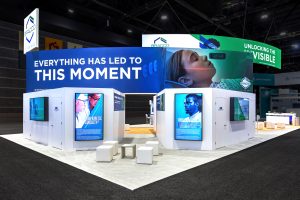- Chris Beckstedt
Strategy and Planning Considerations
Whether you are planning an in-person event, a virtual event, or some kind of hybrid, there are some recommended best practices to follow to increase your odds of a successful event.
At Exhibit Concepts, we follow a specific methodology – Discover, Design, Develop, Deliver
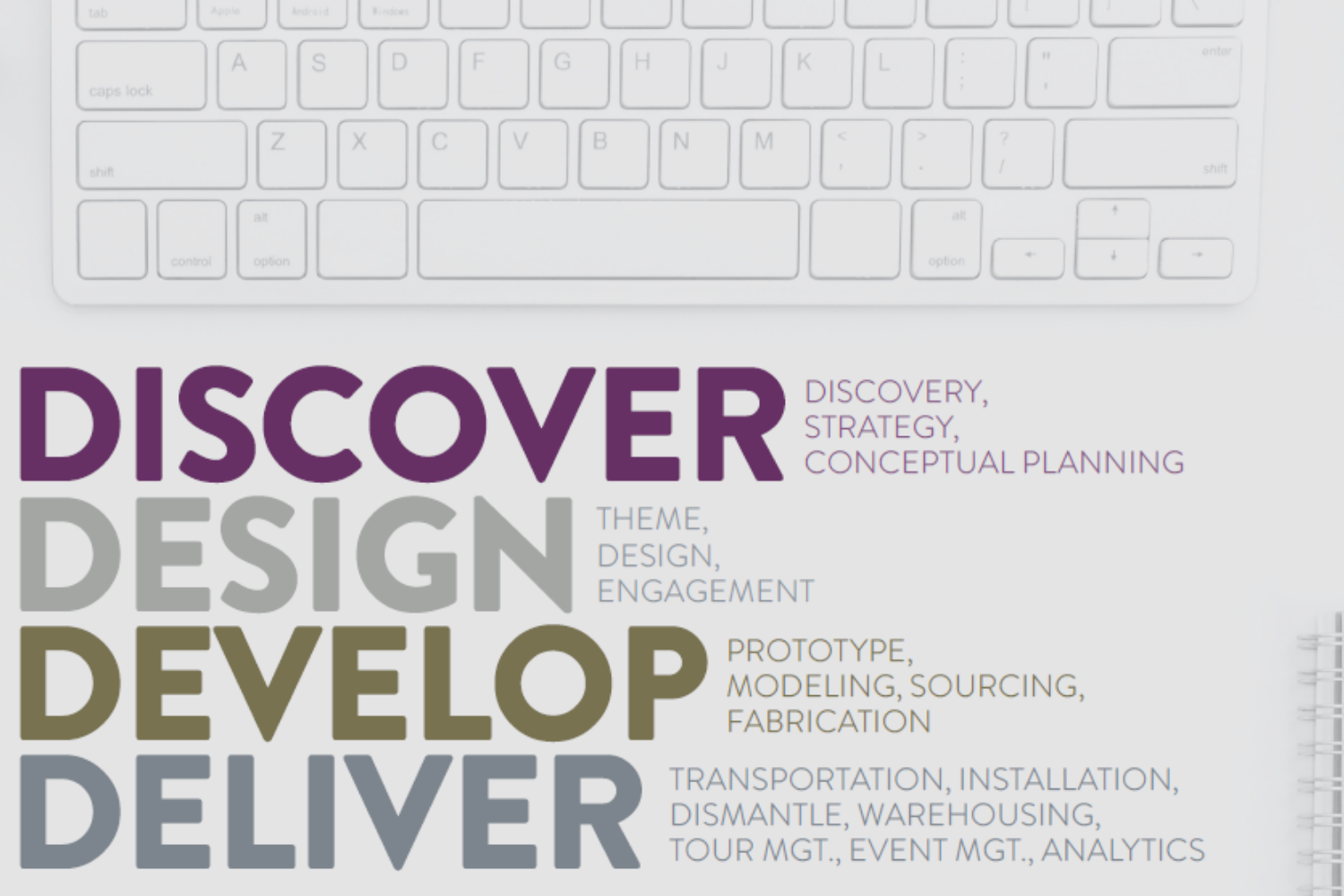
Discover
The most important step in the entire process is Discovery. What is uncovered and shared during this meeting(s) sets the stage for the entire event. Typically, we share some of our experience with other clients and different types of things that you can do. This is to get the creative juices flowing. We want to start the conversation as broad as possible and narrow down to specifics as we go. Our primary goals in the Discovery session(s) are to clearly understand your objectives for the event, your ideal attendee personas, preliminary ideas, and any areas that are “off limits.”
Having the right stakeholders involved in Discovery is critically important. We recommend that you include as many different constituents as possible, those that will be providing content or support and those that will benefit from the leads generated from the event. Each stakeholder has a unique perspective that should be taken into consideration. And the more involved your stakeholders are in the up-front planning of your event, the more they are bought in to support it when you go live. Stakeholder involvement helps to ensure alignment and that everyone has a voice in the conceptual planning.
Be prepared for some tough questions. We want to understand your objectives. But we also want to make sure they are realistic. And we want to make sure that plans are in place to measure actual results against those objectives. Other questions to prepare for include:
- Details about the audience, who is the primary focus, what do they know about your product or service, how many are expected?
- Is the event targeted around brand, product, service, or other?
- What does this experience look like, what do you want the audience to do or say?
- Prior to the event, how do we best register or attract the target audience?
- Will this effort or campaign need to align with a face-to-face event? Is it part of a series?
During the Discovery phase, we like to share case studies to help identify a budget range, as well as expected timing.
Design

With that rich Discovery information, we go into the next phase in the process, Design. With the information that has been gathered the Design team, led by a Creative Strategist, will iterate on several different possible concept solutions.
Expect a collaborative and iterative process at this step. Loose sketches or wireframes will be shared with the attendee journey, expected deliverables and measurement plan spelled out. Your team has the opportunity to participate in the design process to create the event that is right for your organization and audience.
Develop
Once you have approved the Design plan, the need step is to actually develop or build your site or event.
While your supplier is busy building or coding, you will receive a detailed timeline and schedule of deliverables and approvals. Just like with a physical booth, a virtual event has a layout for your approval. Your team will be providing brand guidelines and content. Your supplier will provide a run of show, rehearsal schedule, contingency plans and a plan for post-event metrics.
In addition to providing content and approvals along the way, during this time period, you will be planning and implementing your pre-event marketing plan to promote your event and drive registrations. In the case of a trade show, your show organizer does most of the work to drive registration. With proprietary events, the onus of generating interest and getting attendees to your event rests on your shoulders.
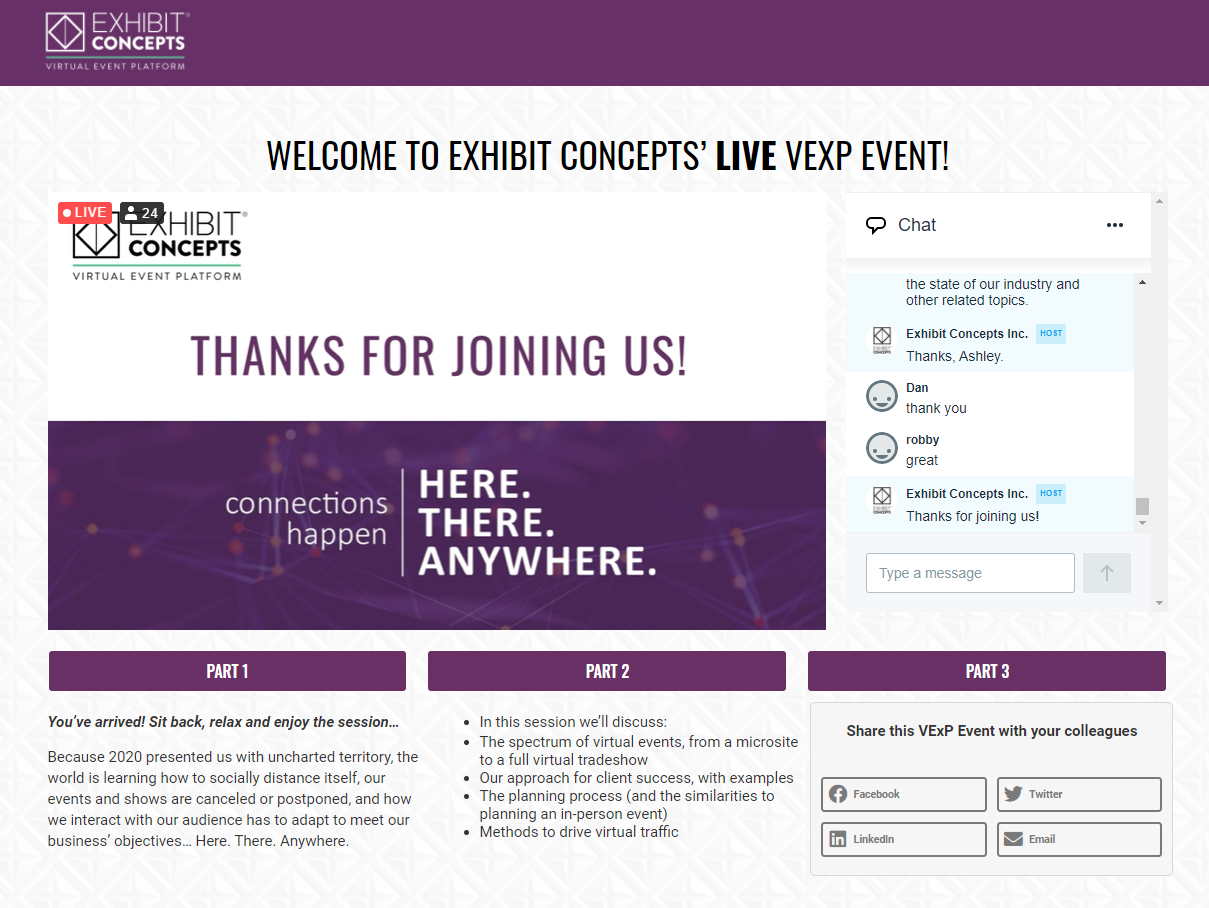
Another area to be planning at this time are all of your follow up scenarios and communication plans. Some people who attend your event are going to engage with you through the Chat feature. Who are you assigning to respond to those chats? Other attendees are going to request immediate follow-up. What does that plan look like? How long are you going to maintain the on-demand version of your event? Is the same or different follow-up planned for visitors to the on-demand site?
Deliver
This is what you’ve been strategizing, planning and working toward. It’s “Go Time” for your actual live event. Just as with an in-person event, this is no time to sit back and relax. You and your team are actively engaged with your audience.
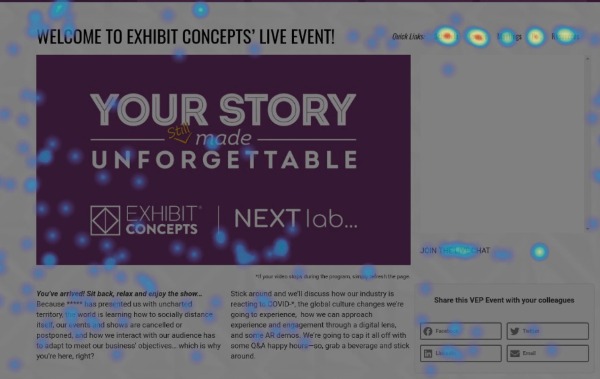
You’ll have metrics about audience attendance almost immediately following your event. Your supplier should also provide heatmap data to show what parts of your event site received the most traffic and engagement. The true measure of success of your event goes back to the objectives you set. You’ll want to measure these at distinct points along your event journey. Registrations vs. Invites. Attendance vs. Registrations. Time on Site. % of Audience that stayed through the entire event. Engagements. Downloads. Requests for Follow-up.
Planning a virtual event may seem daunting. It is different not seeing as much physical evidence of a booth being built or promotional items being delivered. However, the basic steps in planning a virtual event are not much different than planning an in-person event. And by working closely with a partner who has a proven approach, a successful but not stressful, virtual event is in your future.

Chris Beckstedt
Account Executive, Exhibit Concepts, Inc.
Chris Beckstedt is an Executive with 30 plus years of experience in sales, product development, project and program management, and strategic solutions planning.
Since 2002, Chris has been with Exhibit Concepts, Inc. working with clients to help build brand recognition and grow market share. Prior to this Chris worked 17 years for a fortune 500 company in sales and engineering roles with manufacturing and product development programs both domestic and global. Chris has an educational background in general fine arts and business.


